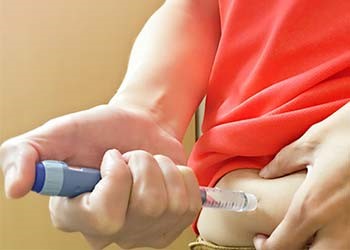- Camp Clinic : Monday to Friday : 7:30am - 9:30am & Evening : 5:30pm - 7:30pm
- Dhole Patil Clinic : Monday to Saturday 1:30pm - 4:30pm
INSULIN CLINIC
The importance of Insulin :
Insulin is a hormone made in your pancreas, a gland located behind your stomach. It allows your body to use glucose for energy. Glucose is a type of sugar found in many carbohydrates.
After a meal or snack, the digestive tract breaks down carbohydrates and changes them into glucose. Glucose is then absorbed into your bloodstream through the lining in your small intestine. Once glucose is in your bloodstream, insulin causes cells throughout your body to absorb the sugar and use it for energy.
Insulin also helps balance your blood glucose levels. When there’s too much glucose in your bloodstream, insulin signals your body to store the excess in your liver. The stored glucose isn’t released until your blood glucose levels decrease, such as between meals or when your body is stressed or needs an extra boost of energy.
Insulin as treatment for diabetes
- Injections of insulin can help treat both types of diabetes. The injected insulin acts as a replacement for or supplement to your body’s insulin. People with type 1 diabetes can’t make insulin, so they must inject insulin to control their blood glucose levels.
- Many people with type 2 diabetes can manage their blood glucose levels with lifestyle changes and oral medication. However, if these treatments don’t help to control glucose levels, people with the condition may also need insulin to help control their blood glucose levels.
Administration and dosage:
- You can’t take insulin by mouth. You must inject it with a syringe, insulin pen, or insulin pump. The type of insulin injection you use will be based on your personal preference, health needs, and insurance coverage.
- Your doctor or diabetes educator will show you how to give yourself the injections.

INSULIN SYRINGES:
An insulin syringe has three parts: a needle, a barrel, and a plunger. The needle is short and thin and covered with a fine layer of silicone to allow it to pass through the skin easily and lessen pain. A cap covers and protects the needle before it is used. The barrel is the long, thin chamber that holds the insulin.
INSULIN PEN :
Insulin pens do not eliminate your need to poke yourself with a needle. They simply make measuring and delivering your insulin easier.
Insulin pens deliver anywhere from .5 to 80 units of insulin at a time. They can deliver insulin in increments of one-half unit, one unit, or two units. The maximum dose and the incremental amount vary among pens. The amount of total insulin units in the cartridges vary as well.
The pens come in two basic forms: disposable and reusable. A disposable insulin pen contains a prefilled cartridge, and the entire pen is thrown away when the cartridge is empty. Reusable pens allow you to replace the insulin cartridge when it’s empty.
The insulin pen you use depends on the type of insulin you require, the number of units you typically need per insulin shot, and the available pens for that insulin type. The needles on insulin pens come in different lengths and thicknesses, and most fit on all of the available insulin pens. Talk to your doctor or healthcare provider to decide which pen is best for you.


INSULIN PUMPS :
An insulin pump is a machine which enables insulin to be delivered either automatically, or in response to instructions given by the pump wearer. It drip feeds insulin into the body through the day and can also deliver larger doses of insulin whenever needed, such as before meals. Insulin pumps can also be programmed to deliver specific doses at set times.

Click here
for Clinic Appointment


